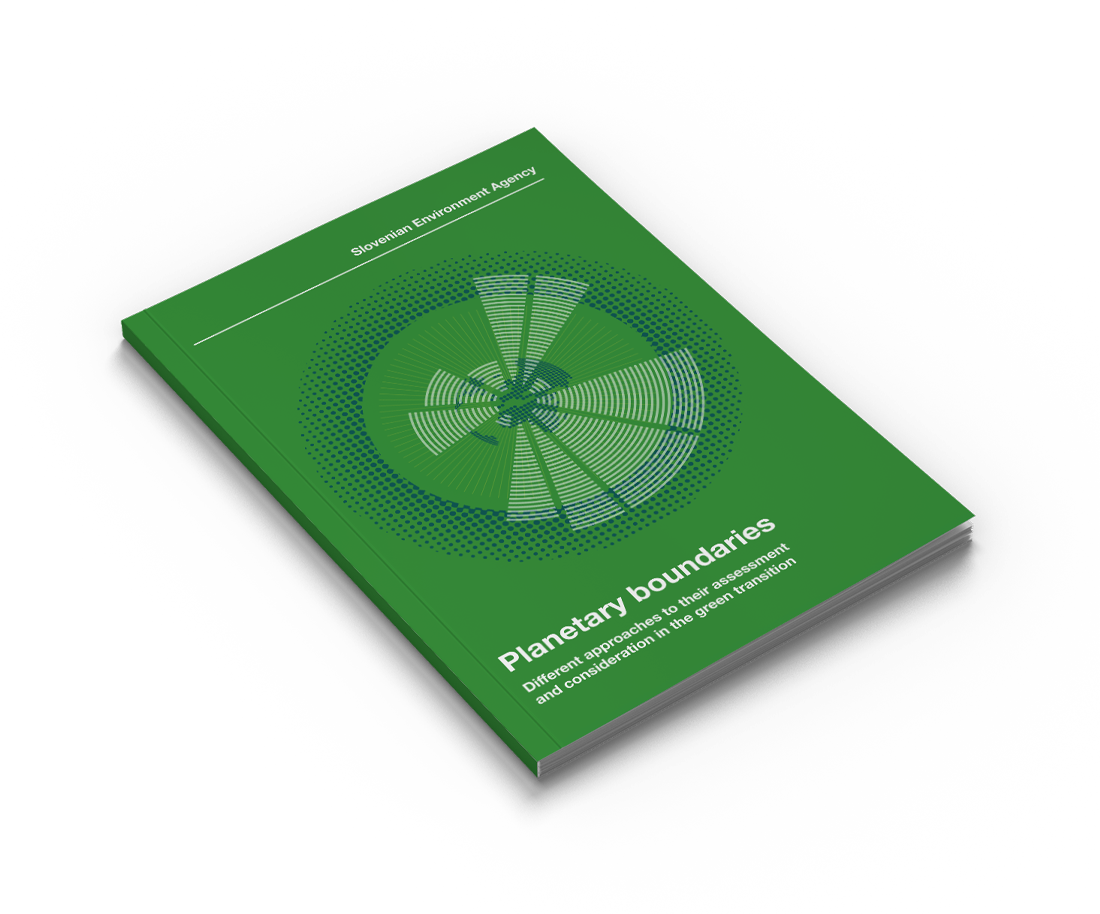Is Europe living within the limits of our planet?
- Estimating Europe's environmental footprint in relation to planetary boundaries: A report by the European Environment Agency (EEA) and FOEN (Federal Office for the Environment, Switzerland)
- Valuing European consumption and production in the context of planetary constraints
- EXIOBASE disaggregated version 3 (REX3) and its application
The analysis that examines European production and consumption in the context of planetary boundaries reveals whether Europe is operating within safe environmental limits. The findings show that European environmental footprints in certain areas have already exceeded safe limits, necessitating urgent action.
Estimating Europe's environmental footprint in relation to planetary boundaries: A report by the European Environment Agency (EEA) and FOEN (Federal Office for the Environment, Switzerland)
Allocation of planetary caps in four steps: definition of the allocation and then calculation methods (1 and 2), calculation of European shares (3), calculation of European caps (4).
In 2020, the European Environment Agency (EEA) and the Swiss Federal Office for the Environment (FOEN) published the report “Is Europe living within the limits of our planet?”. The report examines ways to define an environmentally safe operating space for Europe and tests the approach on three selected planetary constraints: the phosphorus and nitrogen cycle, land-use change and freshwater use. The analysis covers the 33 EEA Member States. To measure European performance against the planetary constraints, biophysical control variables were adjusted to European data. The report extends the assessment of the allocation principles to the European level, addressing the challenge of determining Europe’s share of global constraints in order to define Europe’s share within the global safe space.
Five principles for the allocation of global environmental or planetary constraints
Applying the five allocation principles, the average European share is 7.3% of the global cap. The principle of the “right to development”, which assumes that poorer countries need greater access to resources to achieve development, determines the lowest share (4.1%). On the other hand, the principle of “sovereignty”, which is based on the right of countries to use resources within their borders, determines the highest share (12.5%).
In addition to these two principles of allocation, the principles of ‘equity’, which ensures that everyone on the planet has an equal share in the use of resources (8.1%), and ‘needs’, which allocates resources according to the basic needs of the population (7.3%), are also important. The principle of ‘capability’, on the other hand, assumes that the more developed countries, with greater financial and technological capabilities, take a greater share of the responsibility for reducing environmental impacts (6.2%).
The European performance is calculated using a consumption perspective that takes into account the global economy and trade flows, which makes it possible to estimate the environmental impacts due to European consumption.
In addition to these two principles of allocation, the principles of ‘equity’, which ensures that everyone on the planet has an equal share in the use of resources (8.1%), and ‘needs’, which allocates resources according to the basic needs of the population (7.3%), are also important. The principle of ‘capability’, on the other hand, assumes that the more developed countries, with greater financial and technological capabilities, take a greater share of the responsibility for reducing environmental impacts (6.2%).
The European performance is calculated using a consumption perspective that takes into account the global economy and trade flows, which makes it possible to estimate the environmental impacts due to European consumption.
Yes
Maybe
Maybe not
No
It is unclear
The EEA/FOEN report concludes that Europe’s footprint needs to be reduced by around 3 times for nitrogen losses, 2 times for phosphorus losses and almost 2 times for human impact on land use change. The policy response to the current challenges related to nutrient cycling and land use change is not sufficiently integrated.
The development of the Eighth Environmental Action Programme under the European Green Deal presents an opportunity to address these challenges more comprehensively and to reduce Europe’s environmental pressures abroad. Food, energy and mobility systems are the main drivers of planetary overshoot. Transforming the food system is key to achieving the Sustainable Development Goals.
Climate change and the integrity of the biosphere are central constraints as they affect other processes of the Earth system. Progress in addressing these issues could be hampered by lack of progress in addressing other constraints such as biogeochemical cycles, land use change and freshwater use.
The development of the Eighth Environmental Action Programme under the European Green Deal presents an opportunity to address these challenges more comprehensively and to reduce Europe’s environmental pressures abroad. Food, energy and mobility systems are the main drivers of planetary overshoot. Transforming the food system is key to achieving the Sustainable Development Goals.
Climate change and the integrity of the biosphere are central constraints as they affect other processes of the Earth system. Progress in addressing these issues could be hampered by lack of progress in addressing other constraints such as biogeochemical cycles, land use change and freshwater use.
Valuing European consumption and production against planetary constraints
The environmental impacts require a shift to responsible consumption and production as soon as possible. Life Cycle Assessment is a comprehensive approach to assessing the environmental impacts of products throughout their life cycle. Although it helps to evaluate impacts, it does not define absolute sustainability. The inclusion of planetary constraints in the life cycle assessment offers an “absolute sustainability assessment”.
A 2010 study evaluated the impacts of EU production and consumption using indicators that take into account life cycle assessment and compared them with planetary boundaries.
The objectives of the study were:
The planetary constraints framework provides a scientifically sound measure of sustainability by measuring ecological thresholds in nine processes. Despite the constraints, the concept highlights critical environmental limits essential for policy making and achieving sustainability goals. A comprehensive assessment of the impact of EU consumption based on them is still limited.
A 2010 study evaluated the impacts of EU production and consumption using indicators that take into account life cycle assessment and compared them with planetary boundaries.
The objectives of the study were:
- To compare indicators with life cycle assessment to assess the sustainability of the EU-28 system.
- To present planetary constraints based on life cycle impact assessment.
The planetary constraints framework provides a scientifically sound measure of sustainability by measuring ecological thresholds in nine processes. Despite the constraints, the concept highlights critical environmental limits essential for policy making and achieving sustainability goals. A comprehensive assessment of the impact of EU consumption based on them is still limited.

Metodology
Socio-economic dimension
To monitor the EU’s progress in decoupling economic growth from resource use and environmental damage, a set of indicators based on life cycle assessment has been developed:
To monitor the EU’s progress in decoupling economic growth from resource use and environmental damage, a set of indicators based on life cycle assessment has been developed:
Domestic Footprint:
EU-wide statistics on environmental pressures and resource consumption.
EU-wide statistics on environmental pressures and resource consumption.
Consumption footprint (bottom-up): Footprint size based on products.
Consumption footprint (top-down): Combined production perspective with estimates of imports and exports.
Final consumption I/O footprint:
Attribution of emissions and resources to economic sectors.
Attribution of emissions and resources to economic sectors.
Consumption Footprint: Estimation of consumption impacts by estimating the life cycle of representative products.
Biophysical dimension
Planetary constraint metrics do not correspond to standard Life Cycle Assessment (LCA) models, so planetary constraints have been developed for 16 impact categories based on Life Cycle Impact Assessment (LCIA) methods. Conversion factors link the planetary constraints from different methods, allowing compliance with European Environmental Footprint (EnvF) regulations.
Planetary constraint metrics do not correspond to standard Life Cycle Assessment (LCA) models, so planetary constraints have been developed for 16 impact categories based on Life Cycle Impact Assessment (LCIA) methods. Conversion factors link the planetary constraints from different methods, allowing compliance with European Environmental Footprint (EnvF) regulations.
Ethical dimension
Two approaches have been used to set planetary limits in the EU:
Two approaches have been used to set planetary limits in the EU:
- Comparison with global plantar constraints to understand the global context and the role of the EU.
- Allocation on the basis of equity, which assumes equal rights to the environment for all inhabitants.
These approaches reveal the need for more comprehensive sustainability assessments and offer guidance on how to take into account plant constraints in life cycle assessments.
The study found that EU consumption significantly exceeded the thresholds for several categories of environmental impacts, with EU citizens experiencing higher impacts than the average global citizen, with the exception of a few categories. These results are due to consumption behaviour, economic role and differences in environmental policies between countries.

Key aspects of planetary constraints assessment
Results and policy implications:
Planetary constraints and Life Cycle Assessment (LCA):
Use of planetary constraints in LCA Life Cycle Assessment):
- Food, housing and mobility are the main contributors to environmental impacts in the EU.
- Food is responsible for 33% of the climate change footprint and 74% of eutrophication.
- To meet planetary climate change limits, we would need to reduce food waste by 90% per capita.
- Policies on land use, climate change and airborne particulate matter (PM) should be addressed as a priority because they pose the greatest environmental risk.
- Uncertainties exist in quantifying sustainability due to incomplete data and modelling limitations.
Planetary constraints and Life Cycle Assessment (LCA):
- Planetary constraints do not fit perfectly with LCA impact categories, focusing on pressure indicators or endpoints.
Use of planetary constraints in LCA Life Cycle Assessment):
- Efforts to include planetary constraints in LCA are under development.
EXIOBASE 3 (REX3)
EXIOBASE 3 is a comprehensive database based on extended input-output tables (EE-IO tables) and includes data on environmental, economic and social flows at the global level. It is designed to analyse the interactions between consumption, production and environmental impacts, in particular in the evaluation of the ecological footprints of countries and regions. EXIOBASE 3 provides a detailed spatial breakdown of environmental impacts such as water stress, biodiversity loss, carbon footprint and other categories. This allows more accurate assessments of the environmental impacts of production and consumption and better planning of strategies to reduce these impacts.


EXIOBASE 3 (REX3) parsed version and its use
The results for the EU-27 show a significant increase in the EU’s environmental footprint on water stress and biodiversity loss, mainly due to the regionalised assessment and spatial disaggregation.
In 2015, one third of the EU’s water stress and half of its biodiversity loss footprint was due to imports from countries grouped together as “rest of the world” in EXIOBASE3. This is mainly due to food imports into the EU, which cause high water stress and biodiversity loss in countries such as Egypt and Madagascar.
Cabernard and Pfister used their EXIOBASE3 database to incorporate environmental footprints such as carbon footprint, water stress and biodiversity loss into a framework for measuring green economy progress (GEP).
It has shown that most countries have not yet reached their environmental targets, while countries with rapidly growing populations are showing an increasing environmental footprint. Their findings underline that more ambitious action is needed to move towards a greener economy, especially in the management of global supply chains. EXIOBASE3 provides detailed information on the environmental impacts of global value chains, enabling the design of effective strategies to achieve a green economy.
In 2015, one third of the EU’s water stress and half of its biodiversity loss footprint was due to imports from countries grouped together as “rest of the world” in EXIOBASE3. This is mainly due to food imports into the EU, which cause high water stress and biodiversity loss in countries such as Egypt and Madagascar.
Cabernard and Pfister used their EXIOBASE3 database to incorporate environmental footprints such as carbon footprint, water stress and biodiversity loss into a framework for measuring green economy progress (GEP).
It has shown that most countries have not yet reached their environmental targets, while countries with rapidly growing populations are showing an increasing environmental footprint. Their findings underline that more ambitious action is needed to move towards a greener economy, especially in the management of global supply chains. EXIOBASE3 provides detailed information on the environmental impacts of global value chains, enabling the design of effective strategies to achieve a green economy.
Planetary boundaries
Discover various approaches to evaluating planetary boundaries and their consideration in the green transition.
The informational material includes detailed explanations of research approaches, analyses, and graphical representations.
The informational material includes detailed explanations of research approaches, analyses, and graphical representations.

